Planers Guide
Power output
The power output of a planer directly affects its capability to handle different types of wood and the overall efficiency of the tool. Look for planers that offer higher power output, such as the DeWalt DW734 with its impressive 15-amp motor that delivers 20,000 cuts per minute. Another excellent option is the Makita 2012NB, which features a 15-amp motor and delivers 8,500 RPM for smooth and precise cuts. For those looking for a more budget-friendly option, the WEN 6552T is also worth considering with its 15-amp motor and 25,500 cuts per minute. Remember, the higher the power output, the better the planer's performance will be when working with different types of wood.
Planing width
The planing width refers to the maximum width of the board that the planer can handle in one pass. It is crucial to select a planer with a suitable planing width to ensure efficiency and smooth operation.
In the market, planers come in various planing width options to cater to different woodworking needs. For smaller-scale projects or working with narrower boards, a planer with a narrower planing width would be sufficient. A great example of a planer with a narrower planing width is the DEWALT DW735X with a planing width of 13 inches.
On the other hand, for larger-scale projects and working with wider boards, a planer with a wider planing width is necessary. A prominent choice in this category is the POWERTEC PL1251, which offers a generous planing width of 12.5 inches. Planers like the Makita 2012NB series that provide a planing width of 12-1/4 inches are also popular options.
Remember to consider the planing width carefully to match your woodworking requirements and ensure precise and efficient results.
Planing depth
Planing depth refers to the maximum depth that the planer can remove material in a single pass. This measurement is usually given in inches and determines the thickness of the stock the planer can handle.
There are different planer models available on the market with varying planing depths. For hobbyists and light-duty planing tasks, the DEWALT DW734 offers a planing depth of up to 1/8 of an inch. It is a portable and versatile benchtop planer suitable for small woodworking projects. For those working on more heavy-duty applications, the POWERTEC PL1252 delivers a planing depth of 1/4 inches, making it ideal for thicker stock and professional woodworking projects. Another option for industrial-grade planing depth is the Grizzly Industrial G0453ZW, which boasts a whopping 3/8 inches of planing depth and is suitable for large-scale woodworking tasks.
Segmentation of planers based on planing depth:
Compact/Home use:
DEWALT DW734: Planing depth of up to 1/8 inch.Makita 2012NB: Planing depth of up to 3/32 inch.
Intermediate/Professional use:
- POWERTEC PL1252: Planing depth of 1/4 inch.
- WEN 6552T: Planing depth of up to 1/8 inch.
Industrial/Commercial use:
Grizzly Industrial G0453ZW: Planing depth of 3/8 inch.Jet JPM-13CS: Planing depth of up to 1/4 inch.
It's crucial to consider the planing depth requirements of your woodworking projects to ensure the chosen planer matches your needs.
Cutting speed
This determines how quickly and efficiently the planer can remove material. A higher cutting speed means faster stock removal, which is especially helpful when working on larger projects or tougher materials.
For those looking for a planer with a high cutting speed, the DeWalt DW734 is an excellent choice. It offers a cutting speed of 30,000 cuts per minute (CPM), allowing for quick material removal. Another option is the Makita 2012NB, which operates at a cutting speed of 14,000 RPM, effectively removing stock with precision and speed. These planers are ideal for professionals and serious DIY enthusiasts who need to tackle larger or more demanding woodworking projects.
Blade type
The blade type can greatly affect the quality of the finish and the efficiency of the planer. There are two main types of planer blades: straight blades and spiral blades.
Straight blades are commonly found in traditional planers and they are known for their simplicity and ease of use. They are generally cheaper and easier to sharpen or replace. Some popular planers that use straight blades include the Dewalt DW734 and the Makita 2012NB. These planers are equipped with high-speed steel (HSS) blades which provide long-lasting sharpness. On the other hand, spiral blades are more advanced and offer various advantages such as reduced noise and smooth finish. Planers like the Rikon 25-130H and the Jet JJP-12HH use spiral blades for improved cutting performance. These blades consist of multiple small cutters arranged in a spiral pattern, which also helps in reducing tear-out.
Blade size
The blade size refers to the width of the cut produced by the planer. The wider the blade, the larger the cut and the greater efficiency it offers in flattening and sizing lumber. It is worth noting that planers with a larger blade size are generally more suitable for tackling large-scale projects, while those with a smaller blade size are better suited for smaller pieces of wood or intricate detailing.
In terms of planers with different blade sizes on the market, a popular choice in the smaller blade size segment is the DEWALT DW734 featuring a 12-1/2 inch blade width. It offers a depth capacity of 1/8 inch and features a three-knife cutter-head, which results in a smooth finish. On the other hand, for larger blade sizes, the Makita 2012NB is a widely recommended option with a 12-1/4 inch blade width. This planer not only has a larger blade but also offers excellent portability and convenience, thanks to its compact and lightweight design.
Blade material
The blade material plays a crucial role in determining the performance and durability of the planer. There are primarily two types of blade material commonly found in planers: High-Speed Steel (HSS) and Carbide.
High-Speed Steel (HSS) blades are known for their strength, hardness, and ability to retain sharpness for an extended period. They are suitable for general woodworking applications and can handle most types of wood with ease. One example of a planer that features HSS blades is the DEWALT DW735X Two-Speed Thickness Planer. It is equipped with three-knife cutter-head with two-speed options which ensures a smooth finish and reduced cutter-head noise.
On the other hand, Carbide blades offer long-lasting sharpness and wear resistance. They are an excellent choice for planing hardwoods or working with abrasive materials. Carbide blades often have a higher price point due to their superior durability and longevity. The Makita 2012NB 12-Inch Planer is a notable example of a planer that utilizes Carbide blades. This portable model features a four-post design and a head planer with disposable, double-edged blades made from tungsten carbide. The carbide blades on this planer provide improved accuracy and longevity in demanding woodworking tasks.
Dust collection system
A good dust collection system in a planer ensures that sawdust and debris are effectively removed, keeping your work area clean and improving the overall performance and longevity of the machine. One excellent option to consider is the DeWalt DW735X planer, known for its powerful three-knife cutterhead and impressive dust collection capability. Equipped with a fan-assisted chip ejection system, it efficiently removes debris and provides a clean working environment. Another notable product is the Makita 2012NB planer, featuring a built-in fan for effective dust extraction. With its quadruple-edge tungsten carbide blades and integrated dust hood, this planer minimizes airborne particles and ensures a cleaner workspace. These products are just a few examples of planers on the market with excellent dust collection features, making them great options for those seeking a cleaner and healthier working environment.
Fence quality
A sturdy and accurate fence ensures precise and consistent cuts, providing a smooth and professional finish to your workpiece. When evaluating fence quality, look for features such as adjustable angles and positive stops, which allow for versatility and easy adjustment. Some top choices in this category include the DEWALT DW735X with its solid construction and intuitive fence design, the Makita 2012NB with its easy-to-use and durable fence mechanism, and the Bosch PL2632K known for its precision fences and enhanced visibility.
It is worth mentioning that planers on the market can be segmented into various groups based on their fence design or construction. For the budget-conscious woodworker, there are affordable options like the WEN 6530 which offers a reliable fence and adequate adjustability. On the other hand, for woodworking professionals seeking superior fence quality, higher-end choices such as the Jet JWP-208HH with its precision-machined and robust fence system or the Powermatic 1791310 equipped with a cast-iron fence and spring-loaded retractable guards might be more suitable. Regardless of the segment, prioritizing fence quality will greatly enhance the accuracy and efficiency of your planing tasks.
Adjustable depth stops
This feature allows you to easily set the desired depth for your planing task, ensuring precision and uniformity in your work. Many high-quality planers offer adjustable depth stops, such as the DEWALT DW735X and the Bosch PL2632K. These planers allow you to accurately set the depth of cut in 1/64" increments, giving you great control over your planing tasks. Additionally, the Makita KP0800K planer features a large, easy-to-read depth scale, making it simple to adjust and monitor the depth of cut. Other options in the market that offer adjustable depth stops include the WEN 6552T and the Delta Power Tools 22-555, providing flexibility and precision in your projects.
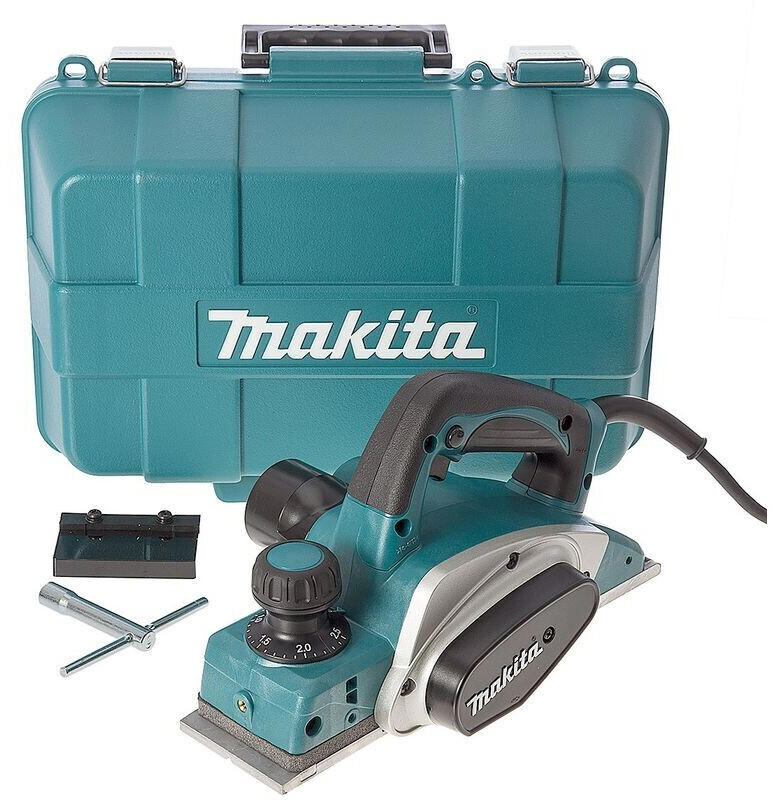
Variable speed control
It allows you to adjust the speed of the cutterhead, giving you more control over the finish and performance of your planing projects. One excellent option to consider is the DEWALT DW735X Two-Speed Thickness Plane. With a powerful 15-amp motor and a two-speed gearbox, this planer enables you to choose between slower speeds for rougher cuts and faster speeds for finishing jobs. The planer also features a three-knife cutterhead that delivers 30% longer knife life and makes blade changes quicker and easier. Another great option is the Makita 2012NB Electric Planer, which offers a variable speed control dial that allows you to adjust the cutting speed based on the type of material you are working with. This planer is equipped with a 15-amp motor, a 28,000 RPM single-speed cutterhead, and a 4-post design with diagonal cross supports for stability and accuracy.
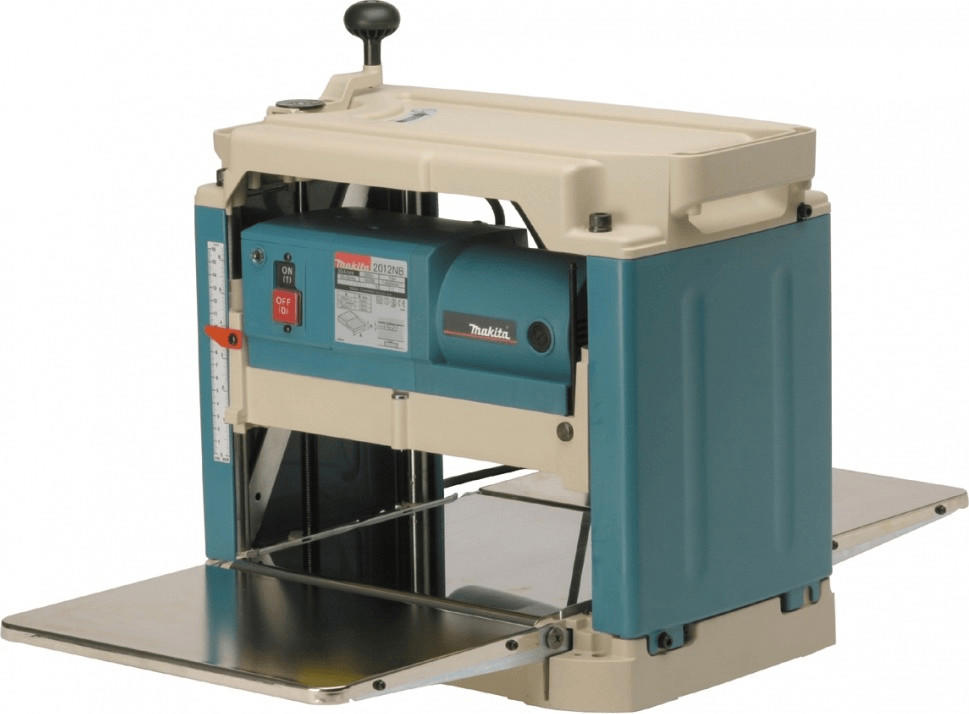

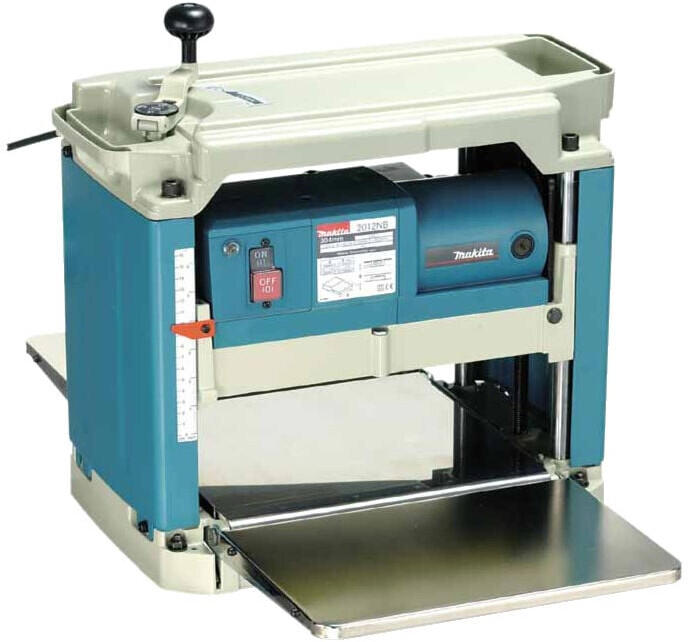
Portability
If you frequently work on different job sites or need to move your planer around the workshop, a portable option is essential. One such example is the 'DeWalt DW735X', which weighs 92 pounds and comes with a sturdy stand, making it easy to transport and set up wherever you need it. Another portable option is the 'Makita 2012NB', which only weighs 61.9 pounds and features compact dimensions for effortless maneuverability. This planer is also equipped with a convenient folding handle, allowing for comfortable transportation. Both of these models have received positive reviews for their portability and are great choices for those seeking a planer they can easily take on the go.
Weight
The weight of a planer can vary widely, with some models being much lighter than others. For instance, the DeWalt DW735X weighs just 90 pounds, making it a great option for those who need to transport the tool frequently. Alternatively, the Makita 2012NB is even lighter at just 62 pounds, making it an excellent choice for jobs that require constant movement. On the other end of the spectrum, heavier planers like the Grizzly G0453Z weigh in at 500 pounds, which is better suited for workshops where mobility is less of a concern. Remember to take into account your specific needs and workspace when considering the weight of the planer you choose.
Ergonomics
Ergonomics refers to the design of a tool to maximize user comfort and reduce the likelihood of user fatigue or injuries. Look for planers that have an ergonomic handle with a comfortable grip, allowing for extended use without strain. One such planer is the Makita KP0800K 3-1/4" Planer. This planer features a rubberized handle and a depth adjustment knob conveniently located on the top handle, providing easy access and comfortable handling. Another great option is the DEWALT DW735X Two-Speed Thickness Planer, which offers an adjustable, ergonomically-designed infeed and outfeed table that reduces snipe during material movement. Additionally, this planer has a convenient side handle for portability, making it more comfortable to transport and store.
Noise level
The noise level of a planer is measured in decibels (dB), and it can greatly affect your comfort and the overall ambiance of your workspace. If you prefer a quieter planing experience, there are several options available. The DeWalt DW735X is a popular planer with a noise level of 96 dB, which is relatively quiet compared to other models. Another option is the Makita 2012NB, known for its low noise level of only 83 dB. For those who want an even quieter planer, the Grizzly G0453Z is a highly regarded model with a noise level of 82 dB, making it one of the quietest options on the market. Consider your workspace and personal noise tolerance when choosing a planer with the appropriate noise level for you.
Planing accuracy
This refers to how precise the planer can produce a smooth and uniform surface on wood, making it crucial for those who prioritize quality and precision in their woodworking projects. The DeWALT DW734 planer is worth considering as it offers a cutting head with three knives for better accuracy and a reversible, disposable, and self-aligning knives system for easier setup and replacement. The Makita 2012NB planer is another option that boasts excellent planing accuracy, thanks to its four-post design and disposable double-edge planer blades that operate at a speed of 8,500 RPM. In the mid-range market, the segment that includes options such as the PORTER-CABLE PC305TP, which has a two-knife cutterhead and a maximum depth of cut of 3/32 inches, offers satisfactory planing accuracy.
Durability
Look for planers that are constructed with high-quality materials that can withstand the wear and tear of heavy usage. One reliable and durable option is the DEWALT DW735X Two-Speed Thickness Planer, which features a powerful 15-amp motor and a 3-knife cutter head for fast and accurate planning. It is built with a sturdy cast aluminum base and a precision-machined table to ensure long-lasting durability. Another excellent choice is the Makita 2012NB 12-Inch Planer with Interna-Lok Automated Head Clamp, which boasts a durable construction with a cast aluminum housing and double-edged carbide blades for exceptional durability and longevity. It also has an Interna-Lok automated head clamp system that secures the cutter head, reducing the risk of snipe.
Segmentation:
- Heavy-duty planers: Ideal for professionals and those who require constant heavy usage. Examples include the DEWALT DW735X and the
Makita 2012NB. - Compact and portable planers: Perfect for smaller woodworking projects or job sites. Look for models such as the WEN 6552T 13-Inch 15A Benchtop Thickness Planer or the
Delta Power Tools 22-555 13 Inch Portable Thickness Planer.
Ease of blade replacement
Some planers have a quick-change blade system that makes blade replacement hassle-free and efficient. For example, the 'DeWalt DW735X' features a three-knife cutter head with a quick-change system, allowing users to easily change blades without any additional tools. This feature diminishes downtime and maintains productivity. Similarly, the 'Makita 2012NB' boasts a tool-less blade change system that enables users to replace blades effortlessly, saving time and effort. With these planers, you can be confident that blade replacement will be a simple and efficient process.
Planing table material
The material of the planing table determines its durability, resistance to wear and tear, and the overall quality of your planing projects. Some common materials used for planing tables are cast iron, aluminum, and steel.
Cast iron planing tables are highly durable and ensure stability and accuracy in your planing tasks. They are known for their ability to absorb vibrations, providing a smooth and precise cutting experience. Examples of planers with cast iron tables are the DEWALT DW735X Planer and the Jet JWP-15HH Planer.
Aluminum planing tables offer a lightweight option without compromising on strength. They are resistant to corrosion and provide excellent surface flatness. An example of a planer with an aluminum table is the Makita 2012NB Planer.

Steel planing tables provide a good balance between durability and weight. They can withstand heavy-duty planing tasks and provide stability for accurate cuts. One example of a planer with a steel table is the POWERTEC PL1251 Planer.
Planing table length
The length of the table determines the maximum width of the wood that can be planed. A longer table allows for planing wider boards, making it a crucial feature for those working with large or wide pieces of wood. For instance, the DEWALT DW734 planer offers a table length of 33-½ inches, making it suitable for planing wider materials. Alternatively, the Makita 2012NB planer comes with a table length of 28-⁷/₈ inches, allowing for a more compact yet efficient planing solution. For professionals who primarily work with narrower boards, a planer with a slightly shorter table length, such as the WEN 6552T with a length of 26 inches, may also be a practical choice.
Planing table height adjustment
This feature allows you to customize the height of the planing table to match your working preferences and reduce the risk of strain or fatigue during long hours of use. Products like the DEWALT DW735X Planer come with a three-knife cutter head and a two-speed gearbox for increased versatility, but more importantly, they offer a planing table that can be easily adjusted to your desired height. This planer also features a height adjustment crank, allowing you to fine-tune the table height and achieve precise cuts consistently.
Other planers with excellent table height adjustment capabilities include the Makita 2012NB Planer that has a low noise level of only 83dB and a precision machined table top to ensure smooth and accurate planing. For those on a budget, the WEN 6550T Planer offers a durable granite table surface that can be adjusted to different heights, providing stability and reducing the chances of sniping. These are just a few examples showcasing the importance of planing table height adjustment in selecting the best planer for your woodworking projects.

Vibration control
Excessive vibrations can lead to a less precise and uncomfortable working experience. Look for planers that offer advanced vibration control technology, such as anti-vibration handles or rubberized grips.
In the mid-range segment, the DEWALT DW735X Two-Speed Thickness Planer is an excellent option. It features a powerful 15-amp motor and a three-knife cutter head that delivers 30% longer knife life. This planer also incorporates a fan-assisted chip ejection system to prevent clogs. With its built-in automatic carriage lock to reduce snipe, this planer ensures a smooth and vibration-free operation.
For a more high-end choice, the Makita 2012NB 12-Inch Planer is a top-notch option. This planer weighs only 61.9 pounds, making it highly portable. Additionally, it is equipped with a four-post design for excellent stability and minimal head vibration during operation. The Makita 2012NB also utilizes a double-edged carbide blade that lasts longer and produces a smoother finish. Its low noise level (83 dB) further enhances comfort during use.
These planer options demonstrate the importance of vibration control and provide specific features that contribute to a more enjoyable woodworking experience. By considering a planer with excellent vibration control, you can focus on precision and achieve smoother results in your projects.
Chip ejection control
This feature determines how effectively the planer disposes of the wood chips and debris created during the planing process, ensuring the work area remains clean and safe. One example of a planer with excellent chip ejection control is the DEWALT DW734 Benchtop Planer. This powerful tool features a fan-assisted chip ejection system that efficiently removes the debris, reducing the chance of clogging and maintaining smooth operation. Another option is the Makita 2012NB Benchtop Planer, which incorporates a built-in internal fan system that pushes wood chips through a large-sized louvered safety hood to prevent blockages. This ensures a tidy work space and uninterrupted planing.
In the market, planers can be categorized into two main groups: benchtop planers and thickness planers. Benchtop models like the aforementioned DEWALT DW734 and Makita 2012NB are ideal for small to medium-sized woodworking projects, providing portable and efficient chip ejection. On the other hand, thickness planers like the DEWALT DW735X Two-Speed Thickness Planer and the Jet JWP-15HH 3 HP Planer are designed for heavier-duty tasks, featuring more advanced chip ejection systems such as multiple fan speeds and increased chip capacity. These options accommodate larger workpieces and heavier wood cutting applications, ensuring effective chip control throughout the planing process.

Extra features
Many planers come with added functionalities that can make your woodworking tasks easier and more efficient. For example, some planers have built-in dust collection systems, such as the Dewalt DW735X Planer, which features a powerful fan-assisted chip ejection system and a dust collection chute. This feature helps to keep your workspace tidy and reduce clean-up time.
Additionally, some planers offer adjustable infeed and outfeed tables, allowing you to customize the support area for longer workpieces. The Makita 2012NB Planer includes adjustable table extensions that provide up to 33-1/2 inches of additional support, making it suitable for processing large boards or panels. Other planers may offer a snipe control feature, which minimizes the depth of the first few and last few cuts. The Bosch GHO10-82 Planer incorporates a snipe lock feature to eliminate snipe for an improved overall finish.


For professional woodworkers or those dealing with large quantities of materials, production planers like the Powermatic 1791267DXK Planer are designed to handle heavy-duty tasks. These planers often have larger material capacities, faster feed rates, and industrial-grade helical cutter heads, which provide smoother finishes and can reduce noise levels. Meanwhile, compact planers like the WEN 6530 Planer are suitable for smaller projects or home use. These compact models often feature lightweight designs, adjustable depth settings, and can be easily transported.
Safety precautions
Look for planers with built-in safety features such as anti-kickback systems that prevent the wood from being forcefully ejected from the machine, reducing the risk of injury. The DEWALT DW735X Planer is an excellent example of a planer that incorporates such features along with a three-knife cutter head, delivering a smooth finish. For added safety, consider opting for a planer with an automatic carriage lock system like the WEN 6550T Planer which prevents accidental movement of the cutter head during operation. Stay safe by choosing a Porter-Cable PC305TP Planer that has an included dust hood and fan-assisted chip ejection system, and easily hooks up to a dust collector or vacuum to minimize flying debris in your workspace.
Planer size
Planer size refers to the width of the planer's cutting area, typically measured in inches. The size of the planer determines the maximum width of material that can be planed in a single pass, and also affects the overall stability and efficiency of the planer.
For small to medium-sized woodworking projects, a planer with a width of around 12 to 13 inches is usually sufficient. A great example is the DEWALT Thickness Planer, 13-Inch (DW735X). This planer offers a maximum planing width of 13 inches and features a powerful 15 Amp motor. It also has a two-speed gearbox that allows for precise control and a three-knife cutter head that provides a smooth finish.
If you work with larger, wide boards or need to handle heavy-duty tasks, a planer with a wider cutting width is recommended. The Jet JWP-15HH 15" Planer is a perfect option for such applications. With its 15-inch cutting width and a powerful 3 HP motor, it can handle larger workpieces with ease. Additionally, it features helical cutter heads that provide quieter operation and smoother cuts, reducing the chance of tear-out on figured wood.
Planer type (benchtop, handheld, stationary)
There are three main types to consider: benchtop, handheld, and stationary planers.
Benchtop planers are compact and portable, making them the perfect choice for small workshops or for woodworkers who need to transport their planer to job sites. One popular example of a benchtop planer is the DEWALT DW735X Two-Speed Thickness Planer, which offers a powerful 15-amp motor and a cutterhead speed of 10,000 rpm for smooth and efficient planing.
Handheld planers, as the name suggests, are designed to be used with one hand. They are great for smaller, less demanding projects or for finer finishing work. The Makita KP0800K 3-1/4" Planer Kit is a highly rated handheld planer that features a 6.5-amp motor and a maximum cutting depth of 1/8 inch. Its lightweight design and comfortable grip make it easy to handle and maneuver.
Stationary planers, on the other hand, are larger and more powerful, making them suitable for heavy-duty, professional use. They are generally more expensive and are intended for dedicated workshop setups. One example of a stationary planer is the Jet JJP-12 Jointer-Planer, which combines the functionality of both a jointer and a planer. With a 12-inch cutting width and a 3-horsepower motor, it is capable of handling larger projects and provides professional-level results.
Compatibility with accessories
Certain planers are designed to work seamlessly with specific accessories, ensuring optimal performance and versatility in woodworking projects. For instance, the DEWALT DW680K Planer features a reversible carbide blade for accurate and precise cuts. It also offers compatibility with the DEWALT DW6677 Planer Blades for alternate cutting styles. Another example is the Makita KP0800K Planer, which is compatible with the Makita 193035-9 Dust Collector Kit, enabling efficient dust collection during operation. Consider the availability and functionality of accessories that can be used in conjunction with the planer to enhance its performance and convenience.
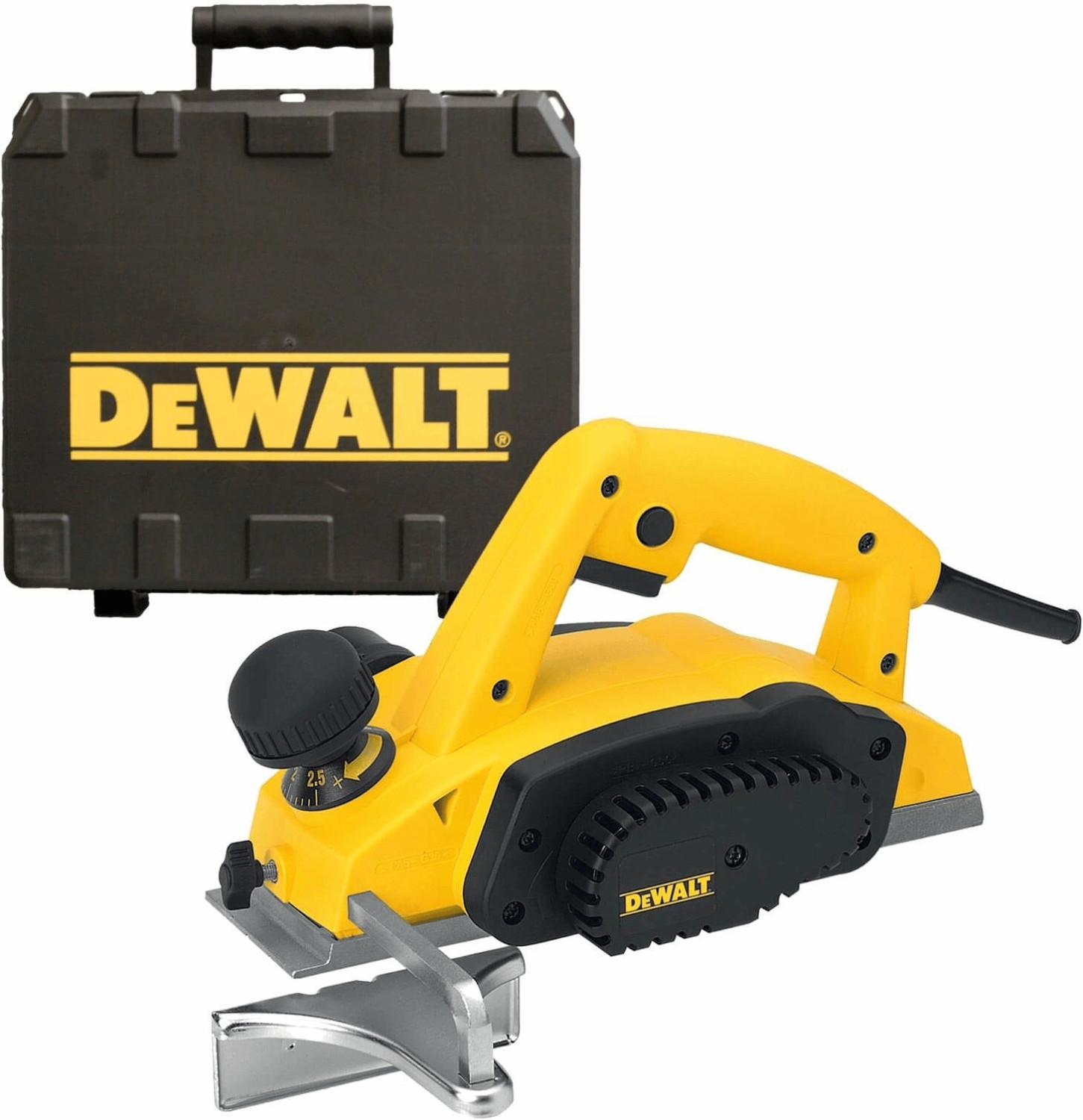

Customer service availability
Having access to reliable customer service is crucial, as it ensures that any issues or inquiries you may have with your planer can be addressed promptly. One planer option that offers exceptional customer service is the DEWALT DW735X Two-Speed Thickness Planer. This planer comes with a three-year limited warranty and one-year free service contract, ensuring that you have support and assistance when needed. Another reliable choice is the Makita 2012NB 12-Inch Planer, which offers a one-year warranty and a responsive customer service team ready to assist you. Having the backing of a responsive customer service team can provide peace of mind and confidence in purchasing a planer that will provide you with excellent performance and support for years to come.
Power source compatibility
The majority of planers operate with either an electric or cordless power source. In the electric category, the Makita KP0800K stands out with a powerful 6.5 AMP motor and compatibility with standard 120V outlets, making it ideal for workshop use. Another excellent option in this category is the DEWALT DW734, equipped with a 15 AMP motor and a no-load speed of 20,000 RPM, providing professional-quality results.
For those looking for cordless convenience, the Bosch PL2632K planer is a notable choice. It runs on the increasingly popular 18V Lithium-ion battery platform, offering portability without sacrificing power. Additionally, the WEN 6530 is an affordable corded planer engineered for compatibility with standard 120V power sources, making it a great choice for DIY enthusiasts on a budget. Consider your power source availability and requirements when selecting the right planer for your specific projects.

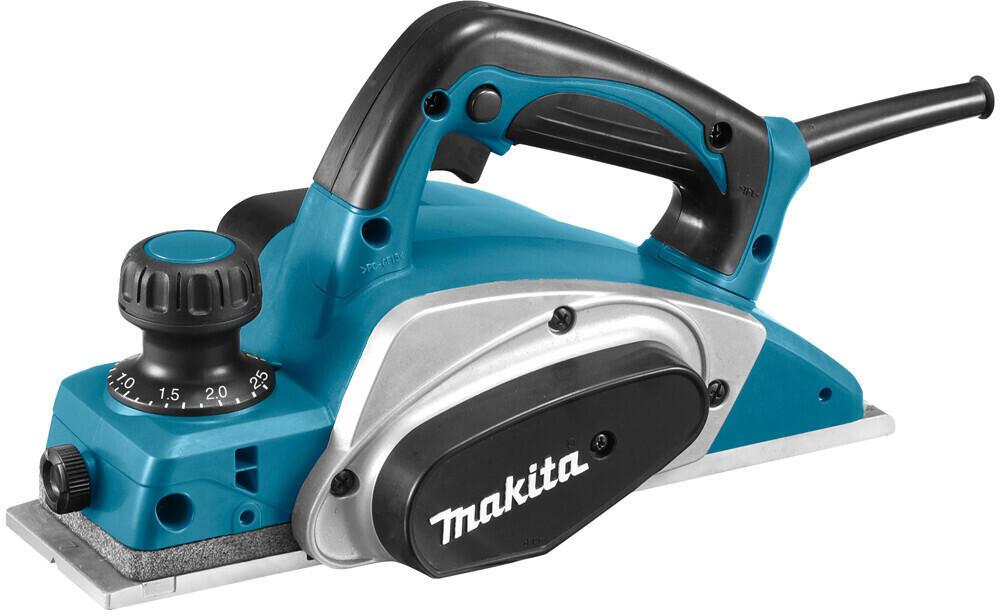

Price
There are various planers available on the market with different price ranges, catering to different budgets. In the lower price range, the WEN 6550 Benchtop Thickness Planer offers great value for money. Priced at around $300, it features a powerful 15-amp motor, capable of planing boards up to 6 inches thick and 12.5 inches wide. A step up in terms of both price and features, the DEWALT DW735X Two-Speed Thickness Planer Package priced at around $600 is a highly-rated option. It comes with a 15-amp motor and two-speed gearbox, allowing for fine finish and faster planning. Additionally, it boasts a three-knife cutter head, delivering 30% longer knife life and a smooth finish. For those with a larger budget, the Makita 2012NB 12-Inch Planer priced at around $750 is a top-tier option. It offers a compact and lightweight design, boasts easy maneuverability, and a powerful 15-amp motor for smooth and efficient planing.
Variety of brands
Each brand offers its own unique set of features and specifications, which have both pros and cons. For example, the DeWalt DW735X planer is renowned for its powerful motor and excellent build quality. It offers a cutting depth of 1/8 inch and a cutting width of 13 inches, making it ideal for both small and large woodworking projects. Additionally, it comes with a three-knife cutter head, which provides a smoother finish.
Another brand to consider is Makita. Their 2012NB planer is well-known for its compact design and portability. It weighs only 61.9 pounds, making it easy to transport between job sites. This planer also features a four-post design and an adjustable depth stop, ensuring accurate and consistent results. However, one limitation of this model is the limited cutting width of 12 inches.
In the segment of heavy-duty planers, the Jet JWP-208HH stands out. It boasts a helical cutterhead with 92 indexable carbide inserts, delivering exceptional cutting performance and reducing noise compared to traditional straight-knife cutterheads. With a cutting width of 20 inches and a maximum cutting depth of 1/8 inch, it is suitable for large-scale woodworking projects. However, its large size and weight may not be ideal for hobbyists or those with limited workshop space.
Comparing the pros and cons of different brands is essential for a fruitful planer purchase as it allows one to identify which features are most important for their specific woodworking needs.